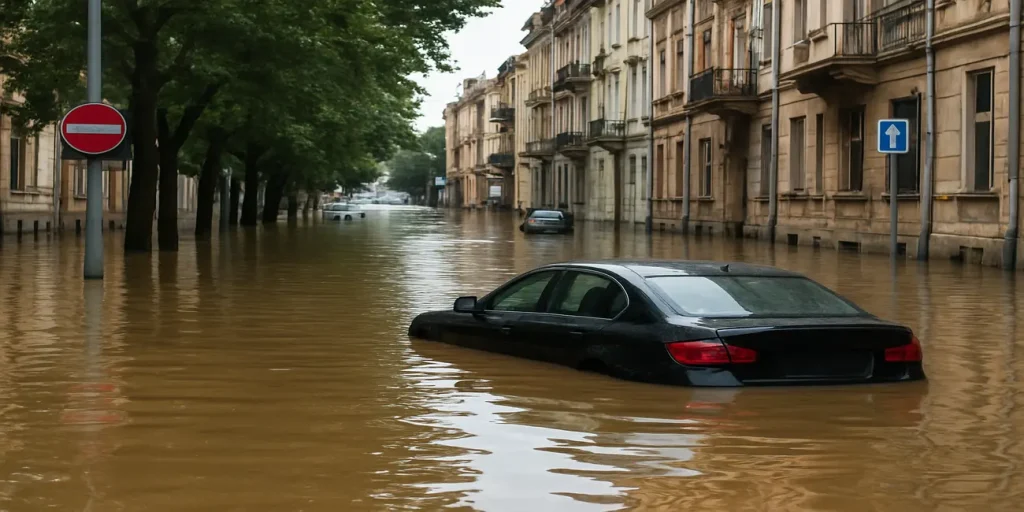
Europe endured extreme heat, floods, and drought in 2024, causing €43 billion in devastating damages.
Europe extreme weather floods, heatwaves and human impact
A joint report by the European State of the Climate, Copernicus and the World Meteorological Organization found that floods, storms, wildfires and heatwaves in 2024 affected over 413,000 people across Europe. Guardian climate report
That report records 335 flood-related deaths in 2024 with severe floods hitting roughly 30 percent of Europe’s river network and 12 percent exceeding “severe” flood thresholds. Reuters data
Valencia in Spain suffered catastrophic flooding in October 2024 which resulted in about 232 fatalities and displaced thousands in the region.
Germany saw several hundred million euros in damage from floods during 2024, including billions from insured losses in Bavaria and Baden-Württemberg.
Europe extreme weather heatwaves estimates mortality and causes
An analysis published in July 2025 estimated that a heatwave in late June across twelve European cities caused about 2,300 deaths.
That same analysis linked approximately 1,500 of those deaths to climate change making the heat more severe. Reuters report
Cities impacted included Madrid, Barcelona, London and Milan where temperatures breached 40°C and wildfires spread nearby.
Related: Putin warns Western troops in Ukraine ‘legitimate target for Moscow’s army’
Worst mortality rates appeared among the elderly, outdoor workers and people with pre-existing health conditions according to epidemiological modelling.
Europe extreme weather economic distribution and sectors hit
Southern and Mediterranean countries such as Greece, Malta, Cyprus and Spain recorded proportional economic losses exceeding one percent of their national output or GVA.
Agriculture suffered heavily in those regions, with crop failures of 30-40 percent for olives, cereals and fruits in worse hit districts.
Transport infrastructure such as roads, railways and urban drainage systems saw extensive damage in Central Europe following intense storms and floods.
Supply chains were disrupted as freight delays mounted and costs rose for businesses reliant on just-in-time deliveries across affected zones.
Europe extreme weather undercounted losses and hidden risks
The €43 billion estimate excludes major wildfire damage and compounding events that overlap such as floods during heatwaves which exacerbate effects.
Health impacts like heat-related illness, respiratory stress and long-term productivity loss are partly excluded or delayed in reporting.
Insurance losses are rising with many properties uninsured or underinsured in flood or drought prone regions according to environmental agency briefs.
The European Environment Agency reports that since 1980 Europe has suffered roughly €790 billion in damages from climate-related extremes, with a growing insurance protection gap. EEA briefing
Europe extreme weather policy response and adaptation measures
EU member states have committed to updating climate risk assessments, resilience planning and flood defences under the Green Deal framework.
Early warning systems are being expanded in many countries to reduce human tolls from heat and flood events.
Investment in drought resistant crops and water management infrastructure is being considered especially in southern Europe to mitigate future losses.
Voices from impacted communities during Europe extreme weather
“We lost more than half of our harvest,” said Giorgos, an olive farmer in the Peloponnese speaking of the summer drought.
“No one can survive another season like this without real support,” he added during a community meeting.
“Our town flooded in one night,” said Sofia, a small business owner in northern Italy.
“The water destroyed stock and closed the road to the port for weeks,” she said reflecting damaged trade access.
Global relevance of Europe extreme weather findings
While data centers and high income countries often dominate media attention, these findings underscore how even well-resourced economies are vulnerable.
Reduced European agricultural output pushes up global commodity prices and affects food importing countries in Africa and the Middle East.
Manufacturing sectors in Asia relying on European component supply also face cost pressures from freight delays caused by damaged infrastructure.
Economists say that Europe’s 2024 extreme weather serves as a warning for international climate adaptation urgency across nations.





